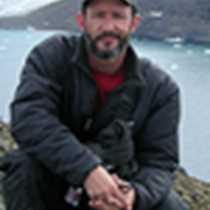New Years Day, Amortajada , Isla San Jose
The first day of 2006 was a fine one in the Sea of Cortez. The morning was spent Zodiac cruising amongst the mangrove forests of Isla San Jose’s Bahia Amortajada. The mangrove environment is amazing in that the trees live with their roots directly in saltwater. This matrix of roots, branches, and leaves is a nurturing home to small fish and invertebrates. These animals begin the food chain that attracts many sea birds to the entrance of the lagoon. The brown pelicans seen in the photo are waiting as the tide goes out so they can catch their morning meal.
The afternoon was spent in Half Moon Bay on Isla San Francisco. This wonderful bay made a great landing area for our kayaks, which we used to explore the rocky shore. Walks with the natural history staff across the salt flat in the center of the island led us to tide pools where the smallest ecosystem in the world exists between high and low water.
Our experiences today were a great start to the year and as a part of our expedition.
The first day of 2006 was a fine one in the Sea of Cortez. The morning was spent Zodiac cruising amongst the mangrove forests of Isla San Jose’s Bahia Amortajada. The mangrove environment is amazing in that the trees live with their roots directly in saltwater. This matrix of roots, branches, and leaves is a nurturing home to small fish and invertebrates. These animals begin the food chain that attracts many sea birds to the entrance of the lagoon. The brown pelicans seen in the photo are waiting as the tide goes out so they can catch their morning meal.
The afternoon was spent in Half Moon Bay on Isla San Francisco. This wonderful bay made a great landing area for our kayaks, which we used to explore the rocky shore. Walks with the natural history staff across the salt flat in the center of the island led us to tide pools where the smallest ecosystem in the world exists between high and low water.
Our experiences today were a great start to the year and as a part of our expedition.




